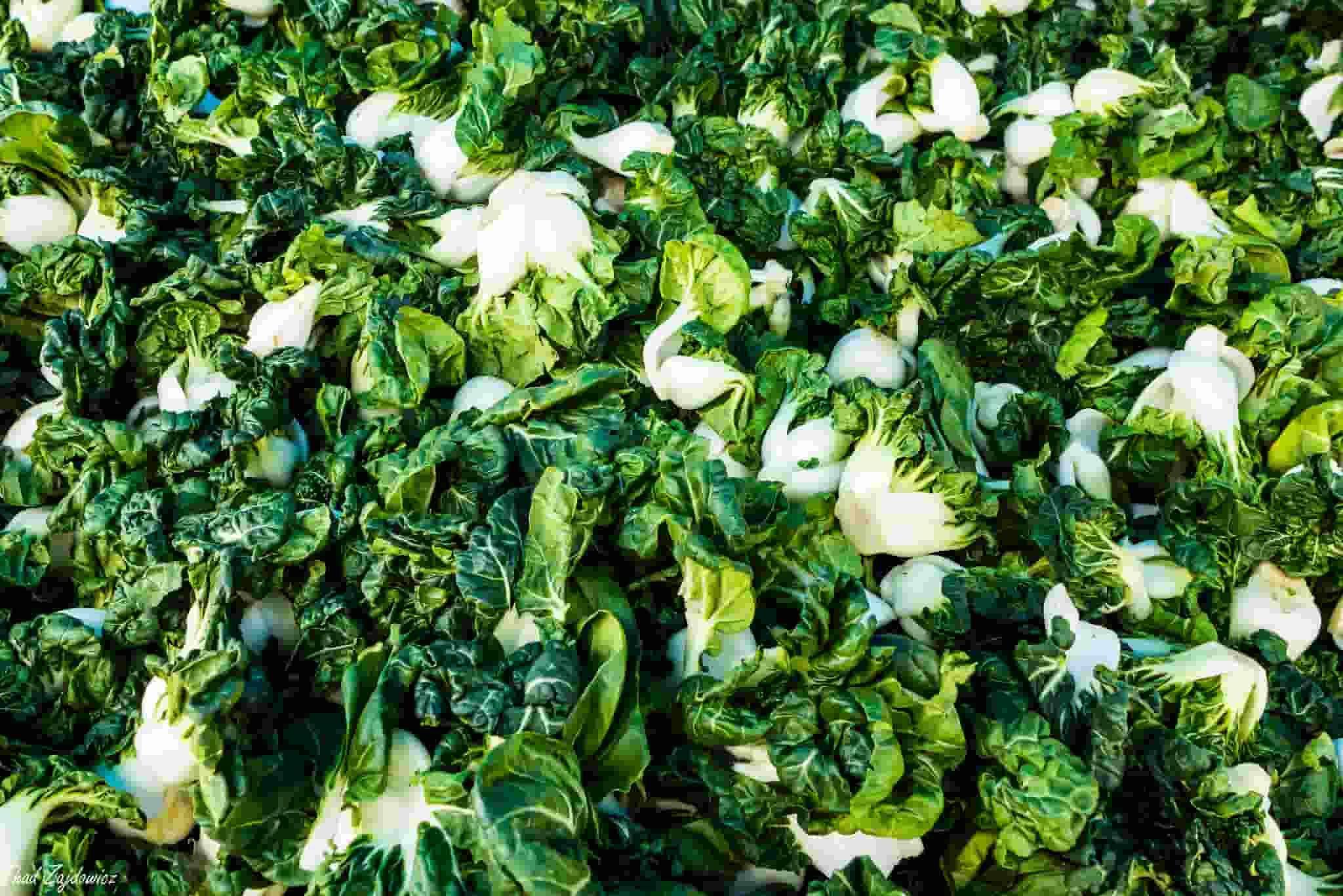
6 Chinese cabbages to discover
And even a little more...
Contents
Craving a bit of exoticism on your plate and in the vegetable garden? The Chinese cabbages should satisfy your curiosity for new flavours. Consumed raw or cooked, these Chinese cabbages are gradually winning over our European palates with their crunchiness combined with gentle flavours. Botanically speaking, these Chinese cabbages belong to the large family of Brassicaceae but are distinguished by their classification within the species Brassica rapa (like turnips). Milder in taste than our cabbages and easier to digest, this Chinese cabbage thrives in rich, organic, well-aerated soil that remains cool in summer. If it enjoys relatively high temperatures combined with constant humidity and sunny exposure, the Chinese cabbage germinates very quickly. And you will be able to enjoy the leaves just as swiftly. Not very hardy, these Asian vegetables are grown in late summer and autumn. There are different varieties of Chinese cabbages, distinguished by their shape, size, and flavour. So, to avoid getting in a pickle choosing, we offer a selection of six Chinese cabbages to discover.
Pak choi, the Chinese cabbage that resembles Swiss chard
Also known as Bok choy, Pak choï (Brassica rapa var. chinenis or Brassica campestris) cannot hide its Chinese origins. Introduced to Europe as early as the 18th century, it piques the curiosity of gardeners due to its chard-like shape. Pak choï indeed appears as a rosette of leaves turned back halfway, and swollen at the base. Its stems are whitish and juicy, and its leaves are broadly veined, wide, and a rich green. It has a mild and light flavour. The young leaves are delicious raw, while it is preferable to cook the stems and more mature leaves, stir-fried in a wok, in soup, or baked in a gratin. It reaches a height of about 30 cm. This cabbage is rich in vitamins A and C, potassium, and minerals. Low in calories and high in fibre.
This is a cabbage that does not form a head and seems less sensitive to bolting than its counterparts. It can be grown in the vegetable garden but also in pots on a balcony.
In the vegetable garden, Pak choï is sown warm between April and July, or directly in place from July to August, in warm, moist, and cool soil, in clusters of 3 to 4 seeds. If Pak choï has been sown in pots under cover, it should be transplanted, once all risk of frost has passed, when the plants have 4 leaves. Pak choï can be harvested between 45 and 60 days after sowing, from August to October.
Pak choï must be watered very regularly to keep the soil moist. Otherwise, it is guaranteed to bolt!
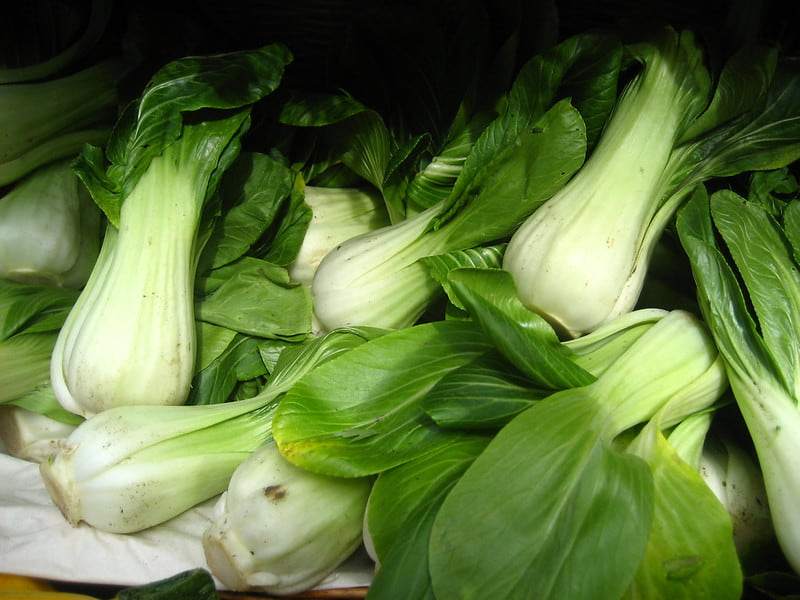
The Pak choï cabbage is recognised by its thick stems and turned-back leaves
The best varieties of Pak choï:
- Pak choï ‘Canton’ Dwarf with slightly sweet stems and heat tolerant,
- Pak choï ‘Green Fortune’ F1 with broad light green stems
- Pak choï ‘Joï Choï’, a hybrid variety that bolts little.
Read also
Sowing and pricking out cabbagesPe Tsai, the Chinese cabbage resembling romaine lettuce
The Pe Tsai (Brassica rapa var. pekinensis), also known as Chinese cabbage, has a different appearance from its cousin pak choi. Its leaves are much longer, slightly undulating, crinkled and blistered at the edges. Formed in rosettes, the leaves have very broad pale green midribs. It has a tapered shape, quite similar to that of romaine lettuce. This cabbage forms a tight, elongated head that can reach 25 to 30 cm.
Chinese cabbage Pe Tsai can be eaten raw in salads. Cooked, it can be stir-fried in a wok, braised in a pan, or added to a stuffing, broth, or soup. It can also be prepared French-style with sausages after being chopped. It can accompany fish or shellfish. Koreans prepare it fermented as kimchi.
In the vegetable garden, growing Chinese cabbage Pe Tsai is not very difficult as long as a few requirements are met. First, be aware that Pe Tsai cabbage is extremely sensitive to heat and drought, which cause it to bolt very quickly. Therefore, sowing should be done either in March-April or at the end of July-beginning of August. At this latter time, it is too young to suffer from the heat and bolt. Harvesting can take place from September until the first frosts, as Pe Tsai is hardier than other Chinese cabbages.
In any case, the soil must always be moist. When the seedlings are a few days old, it is recommended to protect them from sunlight with overturned crates.
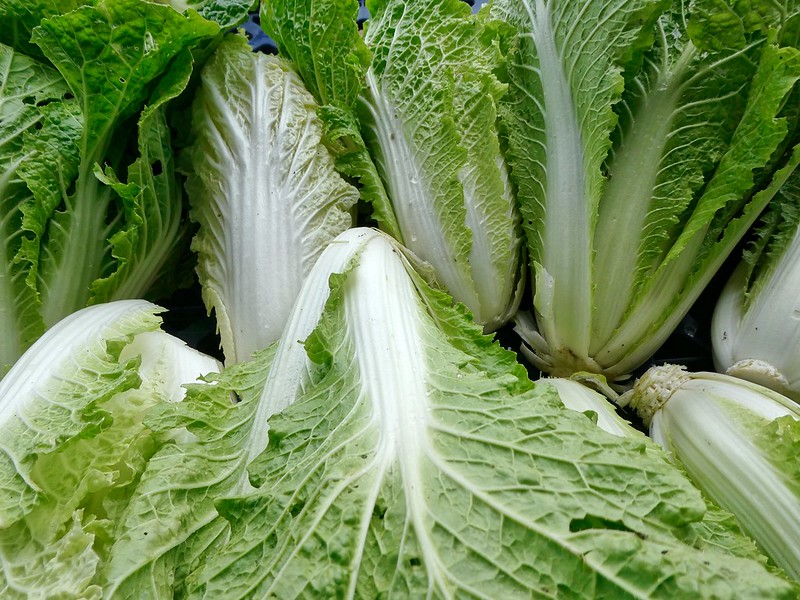
The Pe Tsai cabbage closely resembles romaine lettuce
As for harvesting, it can be done in different ways. You can either pick the entire head or take leaves as needed.
Best varieties:
- Pe Tsai ‘Michihili’ or ‘Granaat’, a traditional summer variety that can form heads of 35 cm. As it is prone to bolting, it should be sown in June or July. Harvest occurs 65 to 80 days after sowing.
- Pe Tsai ‘Spectrum’: this is a fairly hardy and very productive variety of Pe Tsai cabbage. It produces beautiful heads with bright green midribs. Sow in July and August.
- Pe Tsai ‘Wong Bok’: its head is dense and very elongated.
- Pe Tsai ‘Questar F1’: it forms beautiful heads weighing 800 g to 1 kg. This is a very early variety as harvesting occurs 40 to 45 days after sowing.
Discover other Cabbage plants
View all →Available in 0 sizes
Available in 2 sizes
Available in 3 sizes
Available in 1 sizes
Available in 1 sizes
Available in 1 sizes
Available in 1 sizes
Available in 1 sizes
Available in 1 sizes
Available in 1 sizes
Chinese cabbage Tsoi Sim or Choy Sum with edible flowers
The Chinese cabbage Tsoi Sim or Choy Sum is quite similar to Pak Choi. It is distinguished from other Chinese cabbages by its very narrow stems and long leaves. Another notable difference is that its flowers, usually yellow, are edible as buds and have a delicate asparagus-like flavour. In contrast, the stems and leaves have a slight bitterness.
Chinese cabbage Tsoi Sim Choy Sum can be consumed cooked, braised, or stir-fried, and can be added to soups or stews. It can also be steamed. The stems can be eaten raw.
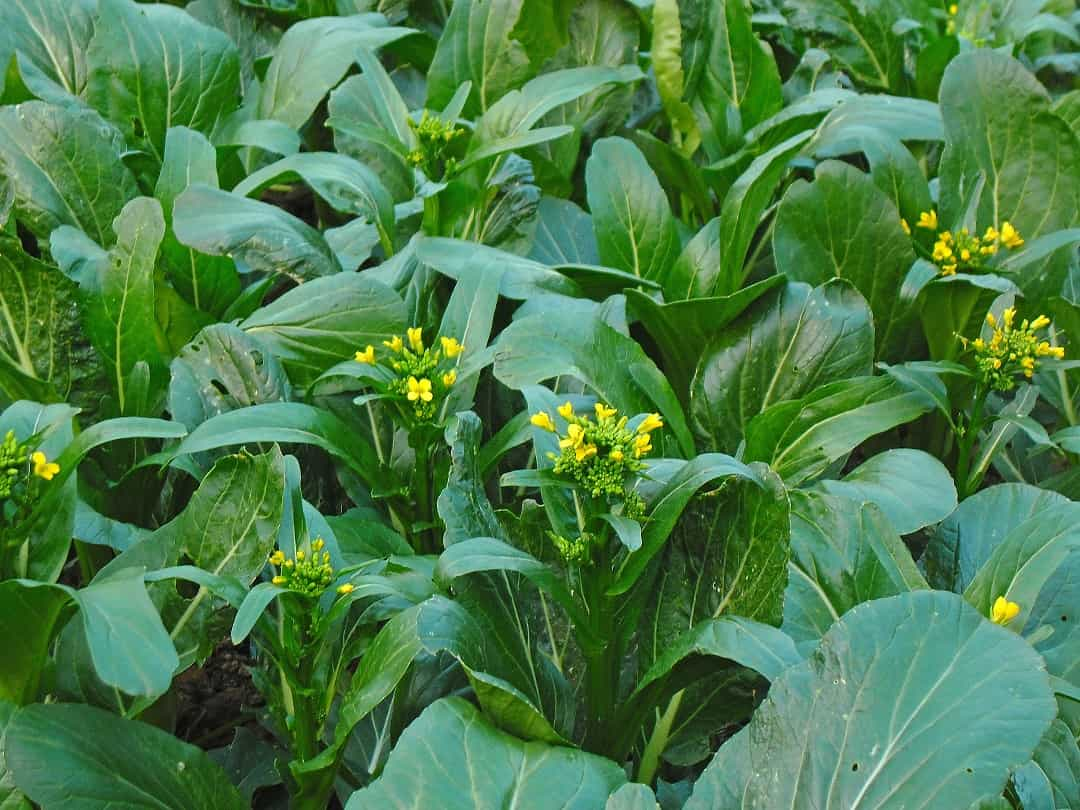
Leaves, stems, and flowers are edible in the cabbage Tsoi Sim
It is a very vigorous vegetable plant that, like its relatives, prefers rich, cool soils. Seeds are sown from mid-May to August, at a soil temperature of at least 20 °C. The harvest occurs 60 days later, from September to November.
Read also
Succeeding in growing Chinese cabbagesChinese cabbage Tatsoï or Tah Tsaï, easy to grow
Less common in Europe than its relatives, Tatsoi Chinese cabbage (Brassica rapa rosularis or narinosa) is also known as tatsoi mustard. It is recognised by its dark green, glossy leaves, which are marked by a midrib. Its leaves, gathered in a compact rosette, are relatively thick and take on a spoon shape at ripeness. The plants generally reach 20 to 30 cm. This Chinese cabbage is frost-tolerant and bolts only slightly.
The young shoots, very tender, offer a mild flavour and are delicious in salads. More mature, the leaves are cooked to be added to soups or in many Asian recipes.
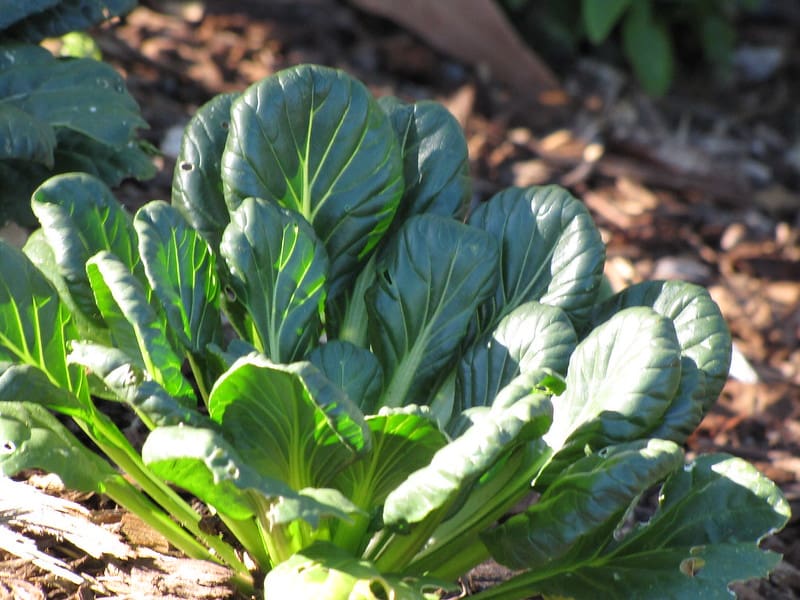
Heat-tolerant, the Tatsoi cabbage benefits from rapid growth
This variety of Chinese cabbage is sown from March to August. Its growth is very rapid, to the point that 20 days after sowing, the first leaves can be harvested. After 45 days, it is fully mature. It is also less demanding in terms of soil. However, Tatsoi Chinese cabbage requires regular watering. It can also be grown in pots on a balcony.
Chinese cabbage Gaï lan, close to broccoli
Also known as Kai-Lan, Gaï Lan (Brassica oleracea) is a Chinese cabbage that resembles our broccoli with its small clusters of edible green flowers. Its leaves are very flat and short, glaucous and waxy, similar to those of green cabbage, and are also edible. Just like its rather thin stems, which are 1 to 2 cm in diameter. It has a strong flavour but is milder and sweeter than broccoli.
All Asians consume it, most often stir-fried or steamed, accompanied by glutinous rice, pork, garlic…
In the vegetable garden, it is sown at the end of spring and in summer. It can be harvested until the first frosts. Its growth is quite rapid, with harvest occurring 4 to 7 weeks after sowing. This harvest takes place at the time of flowering.
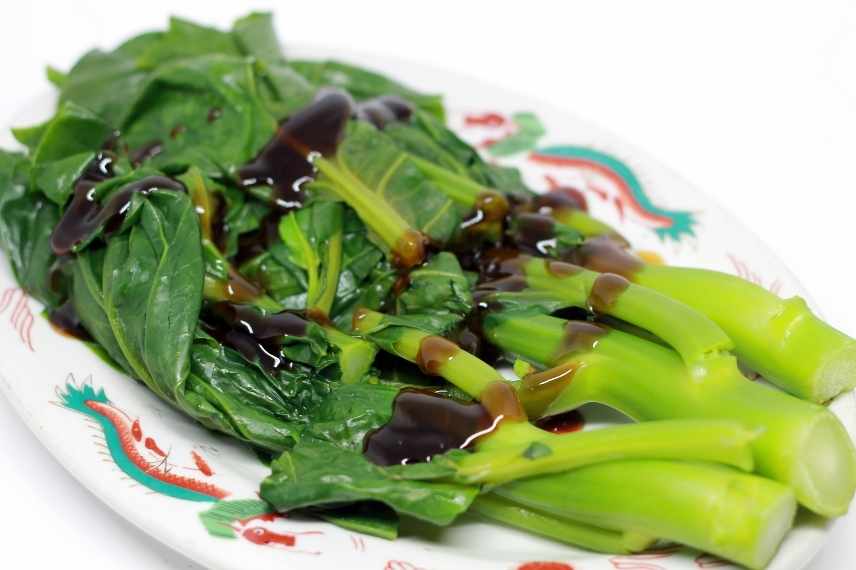
The Chinese cabbage Gaï Lan
Mizuna, or Japanese mustard with a peppery flavour
The mizuna (Brassica rapa var. Japonica or Nipponisica) is also known as Japanese mustard or salad cabbage. It is one of the highly prized members of the “Kyo-Yassai” community, the vegetables once cultivated in the Imperial City for the Emperor. In appearance, it is quite similar to rocket, as its light green leaves, measuring 15 to 25 cm, are finely pinnate and deeply lobed. The comparison does not end there, as it has a slightly peppery flavour. It is a vegetable recognised for its richness in antioxidants.
This Chinese salad cabbage can be eaten raw in salads or cooked. It can be prepared like spinach, in soups or stir-fries. A delicious pesto can also be made from it.
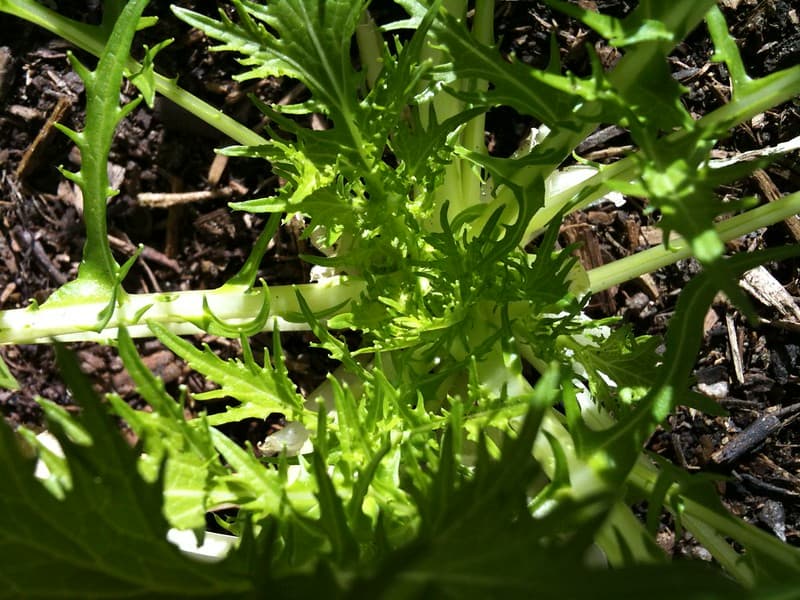 The mizuna cabbage has very pinnate leaves
The mizuna cabbage has very pinnate leaves
Mizuna should be planted in rich, compost-enriched, moist soil. Hardy down to -12°C, it is sown in late summer and harvested throughout the winter. However, it is sensitive to heat. It should be watered regularly to prevent running to seed, which it is prone to.
→ Learn more about Mizuna in our comprehensive guide.
- Subscribe!
- Contents
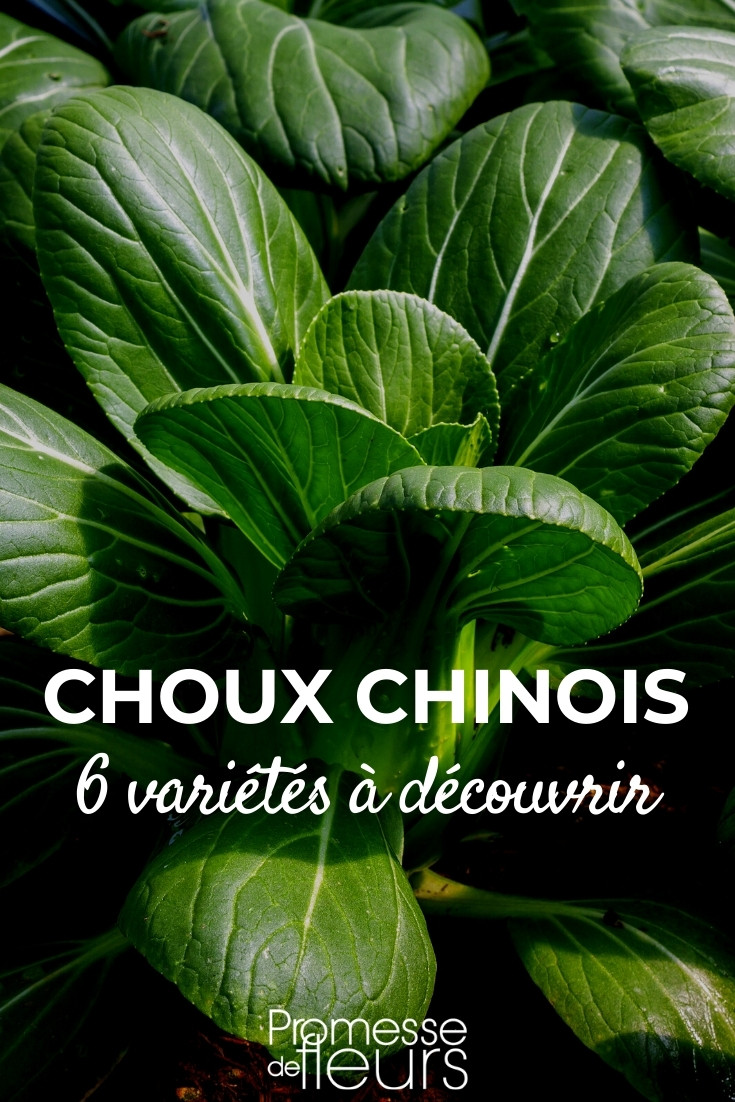































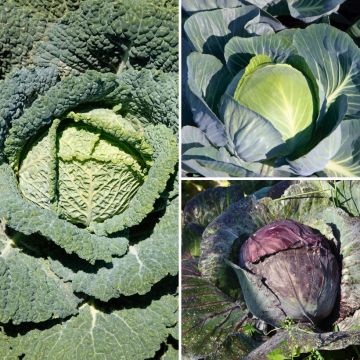
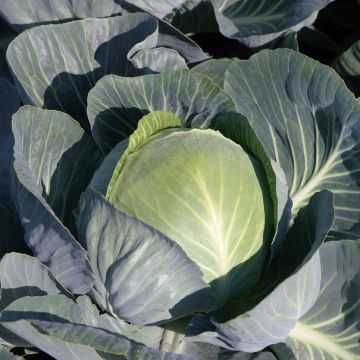
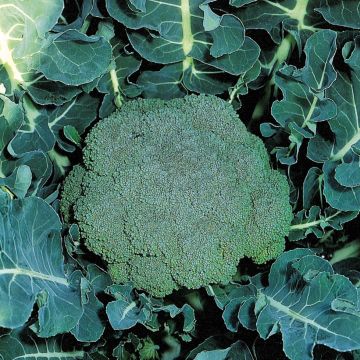
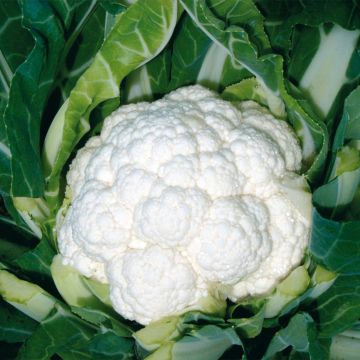
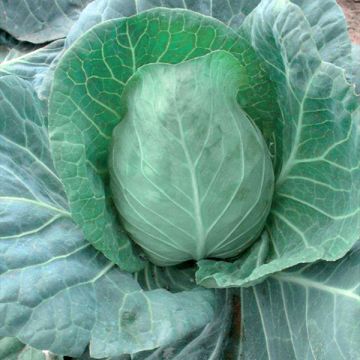
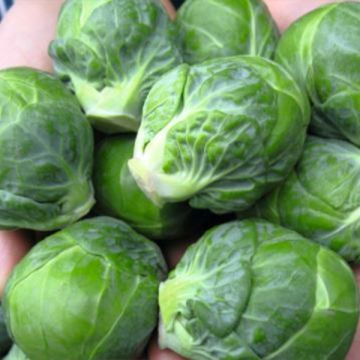
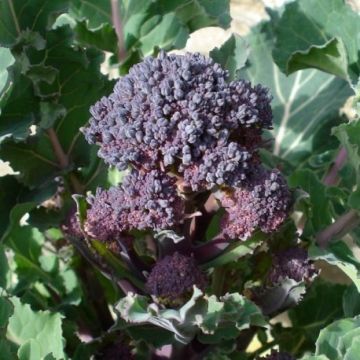
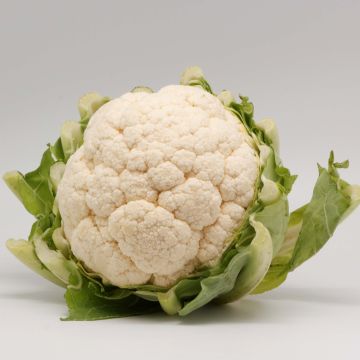
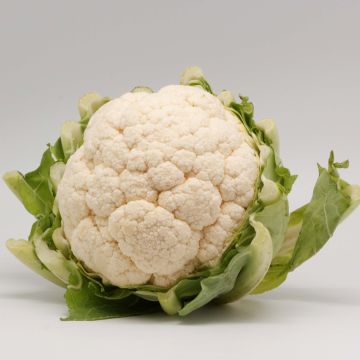
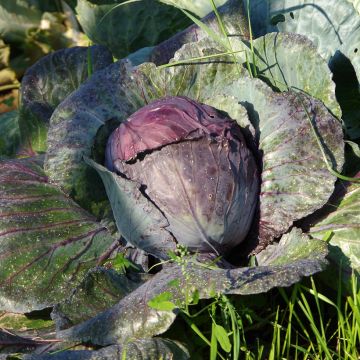
Comments